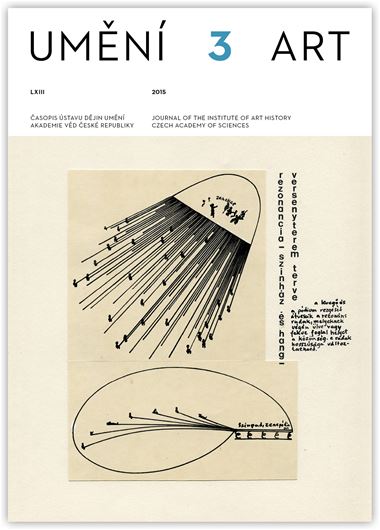Pavel Suchánek – Tomáš Valeš
Der Bildhauer Andreas Schweigl und die Sakralkunst in Mähren zur Zeit der josephinischen Reformen
Reforms to the Catholic Church instituted by Joseph II (Holy Roman Emperor 1780–1790) in the Habsburg Monarchy in the late 18th century led to widespread closures of monasteries and lay fraternities and changes to the liturgy, and in art to a drift towards austere, classical forms. Art historians consider the Josephine Reforms as having played a role in the decline of the baroque. The dramatic reduction in art commissions from wealthy Church institutions and the numerous lay fraternities which had been some of the biggest clients of artists in the 17th and 18th centuries led to a sharp decrease in opportunities for artists to work in the provinces of the Monarchy and to the demise of many workshops with a long and continuous history. Except for the most controversial decrees, which were annulled, the Josephine Reforms remained in effect even after Emperor Joseph’s death and ultimately provided artists with a variety of new tasks and creative challenges. This is well illustrated by the case of Andreas Schweigl (1735–1812), an ‘erudite’ sculptor from Brno/Brünn, whose work continued to be dominated by commissions for the Church, but the nature of that work differed substantially from what he had done in the early part of his career. This article examines the changes to religious art during the era of the Josephine Reforms. It describes general theoretical ideas and the practical problems that together determined the nature of new religious art. It focuses on the role of the central and provincial authorities in public commissions for the Church and on the mechanisms that influenced the nature of such work. It also analyses three decades of work by Andreas Schweigl, who from the start of Joseph II’s reign to the time of his own death in 1812 furnished almost three dozen churches in various parts of Moravia, Silesia, and Lower Austria with artwork produced by his workshop. Not only did Schweigl manage to succeed professionally in the conditions established by the state’s new policies on the Catholic Church and on civil architecture, but, thanks to his education, artistic skill, and collaboration with other artists, his inventive artistic work had a defining influence on the initially rather vague new concept of sacred art in the decades around the turn of the 19th century.
Full-text in the Digital Library of the Czech Academy of Sciences:
https://kramerius.lib.cas.cz/uuid/uuid:d97d1031-6253-49e4-807b-94d1f0d4e2e8
< back

